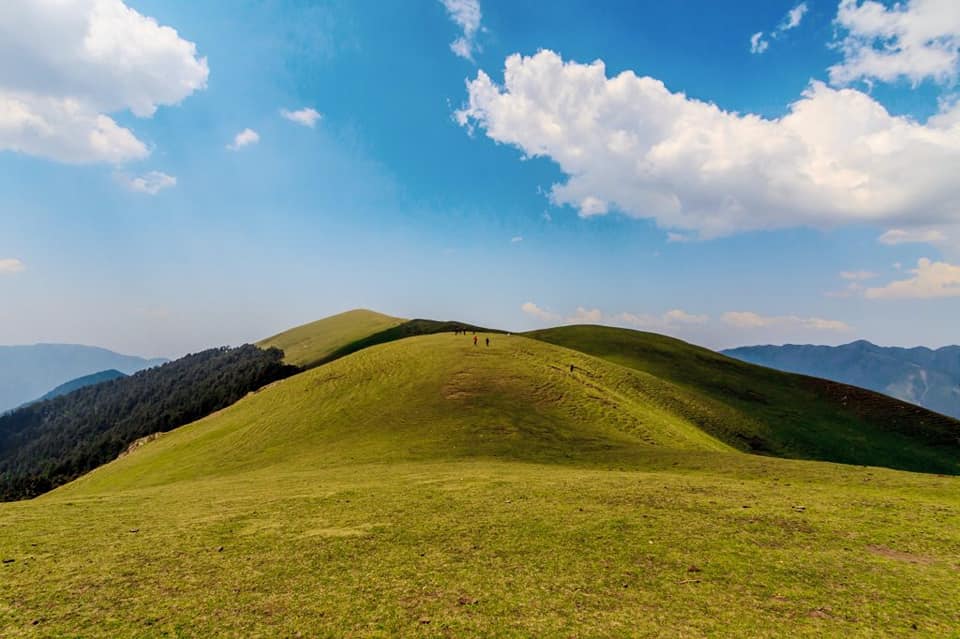Introduction
The Ali Bedni Bugyal Trek is a mesmerizing journey through the lush meadows and pristine landscapes of the Indian Himalayas. This article explores the enchanting trek, taking you on a virtual tour from its scenic beauty to its cultural significance. Discover why this trek is a must-do for any nature enthusiast and adventure seeker.
What is Ali Bedni Bugyal?
Ali Bedni Bugyal, often referred to as the “Garden of Gods,” is a high-altitude alpine meadow situated in the Chamoli district of Uttarakhand, India. With its serene atmosphere and breathtaking scenery, this destination has become a magnet for trekkers and nature lovers alike.
The Trekking Route
Day 1: Lohajung to Didna Village
Your journey begins in Lohajung, a small town that serves as the base camp for the trek. You will trek to Didna Village, passing through dense forests and quaint villages. This route is a sneak peek into the local way of life.
Day 2: Didna Village to Ali Bugyal
On the second day, you’ll ascend to Ali Bugyal, a meadow that comes alive with vibrant wildflowers during spring. The panoramic views of the Himalayan peaks, including Trishul and Nanda Ghunti, are awe-inspiring.
Day 3: Ali Bugyal to Bedni Bugyal
Bedni Bugyal, your next destination, is famous for its mystical aura and the Bedni Kund, a sacred lake. Trekkers often camp here and witness the beautiful play of colors during sunrise and sunset.
Day 4: Bedni Bugyal to Bhagwabasa
Bhagwabasa, your next stop, is a crucial point on the trek. This region is known for its challenging terrain and unpredictable weather. Trekkers stay here overnight to acclimatize before proceeding further.
Day 5: Bhagwabasa to Roopkund
The highlight of the Ali Bedni Bugyal Trek is the visit to Roopkund Lake, also known as the “Mystery Lake.” The lake is famous for its human skeletons, which emerge from the frozen waters during the summer months.
Day 6: Roopkund to Lohajung
The descent from Roopkund back to Lohajung allows you to reflect on your incredible journey. You’ll retrace your steps, passing through the same charming villages and enchanting landscapes.
Flora and Fauna
The trek takes you through diverse ecosystems, from dense forests of oak and rhododendron to alpine meadows. You’ll have the chance to spot Himalayan wildlife, such as musk deer, bharal (blue sheep), and various bird species, adding to the adventure.
Cultural Significance
The region surrounding Ali Bedni Bugyal is rich in local culture and traditions. Trekkers often get the opportunity to interact with the hospitable villagers and learn about their way of life. The Bedni and Ali Bugyal meadows are also the sites of Nanda Devi Raj Jat Yatra, a famous religious and cultural festival.
Best Time to Visit
The Ali Bedni Bugyal Trek is typically done from May to June and September to October when the weather is pleasant, and the meadows are in full bloom.
Conclusion
The Ali Bedni Bugyal Trek is a journey to the heart of the Himalayas, where nature, culture, and adventure come together to create an unforgettable experience. As you explore the enchanting landscapes and interact with the locals, you’ll find yourself immersed in the beauty and spirituality of the region.
FAQs
1. Is the Ali Bedni Bugyal Trek suitable for beginners?
The trek can be challenging, so it’s recommended for those with some trekking experience. Beginners should consider shorter treks in the region first.
2. What should I pack for the trek?
Essentials include warm clothing, trekking boots, a good backpack, a first-aid kit, and a sturdy tent if you’re camping.
3. Are there any altitude sickness concerns on this trek?
Yes, acclimatization is crucial, and trekkers are advised to spend a night at Bhagwabasa to adapt to the higher altitude.
4. Can I do this trek solo, or should I go with a group?
While solo trekking is possible, going with a group or hiring a local guide is recommended for safety and a more enriching experience.
5. Is there mobile network coverage during the trek?
Mobile network coverage is limited. It’s best to inform your loved ones before embarking on the trek and to carry a satellite phone for emergencies.


0 Comment